Occupational safety training for operating automatic bottle capping machines
99,000 ₫
Note: The price above is calculated for one person, and it may vary depending on the number of participants in the training course and market fluctuations. For more accurate pricing support, please refer to the quotation table or contact our consulting staff directly.
Occupational safety is an important issue when operating an automatic bottle capping machine and must be addressed promptly to ensure the health and safety of workers while enhancing the reputation of businesses. The Occupational Safety Training course is one of the effective solutions to raise awareness about preventing workplace accidents for workers when operating automatic bottle capping machines.
Table of Contents
Toggle1. Overview of Automatic Bottle Capping Machines
a. What is an Automatic Bottle Capping Machine?
An Automatic Bottle Capping Machine is an industrial device used to automatically cap bottles or jars containing products such as food, beverages, chemicals, pharmaceuticals, and many other types of products. This machine operates by automatically placing and tightening the cap onto the bottle quickly and efficiently.
Automatic bottle capping machines can have various designs and technologies, but their basic function is to ensure product safety and sealing by securing the cap firmly. Common features include automatic adjustment for different bottle and cap types, cap-tightness inspection and adjustment, and high-speed capping for mass production needs.

b. Operating Principle of Automatic Bottle Capping Machines
The operating principle of an automatic bottle capping machine usually involves the following stages and mechanisms:
- Bottle and cap placement: Bottles and caps are first supplied automatically from the feeding system. The machine ensures that the bottle and cap are precisely positioned at the capping location.
- Cap holding: Devices or mechanisms hold the cap securely in place, preventing it from moving during the capping process.
- Capping: The capping mechanism tightens the cap onto the bottle using mechanical, electronic, or pneumatic methods, depending on the machine’s design.
- Inspection and adjustment: Some machines check the tightness of the cap after capping. If the cap is not secure, the machine can adjust the torque or replace the cap to ensure product safety and quality.
- Rejection of defective products: Products that fail quality standards (e.g., cracked bottles) can be removed to ensure that only high-quality, properly capped items proceed to packaging.
- Output of capped products: After capping, the finished products are discharged from the machine for packaging and distribution.

c. Industries Using Automatic Bottle Capping Machines
Automatic bottle capping machines are used across various industries, especially in food and beverage packaging. Key industries include:
- Food and Beverage Industry: Producers of cooking oil, bottled water, milk, fruit juices, soft drinks, mineral water, beer, wine, sauces, and other products use automatic capping machines to ensure safe packaging and product preservation.
- Chemical Industry: Companies producing chemicals, lubricants, detergents, bleaches, and other chemical products use capping machines for safe and efficient packaging.
- Pharmaceutical Industry: Producers of tablets, syrups, and other pharmaceutical products rely on automatic capping machines to maintain product safety and quality.
- Cosmetics and Personal Care Industry: Machines cap containers for creams, facial cleansers, perfumes, and other personal care products.
- Beauty and Chemical Products Manufacturing: Nail polish, lipsticks, perfumes, and other beauty products also require automatic capping machines for secure and attractive packaging.
2. Overview of Safety Training for Operating Automatic Bottle Capping Machines
a. What is Occupational Safety Training?
- Occupational safety training for operating automatic bottle capping machines equips workers with knowledge to prevent workplace accidents. Employees directly working with these machines belong to Group 3.
- Safety training helps workers identify and avoid hazards, reducing the risk of workplace accidents during machine operation.
REGISTER FOR OCCUPATIONAL SAFETY TRAINING
b. Training Duration
Initial Safety Training
- Total training time is at least 24 hours, including assessment time.
- 8 hours of theory on policies and occupational safety laws
- 8 hours of theory on basic occupational safety knowledge
- 4 hours of theory on specialized training content
- 2 hours of practical training on specialized content
- 2 hours of theoretical examination at the end of the course
Training centers may divide the schedule into multiple sessions depending on worker availability, typically over 3 days with 6 training sessions.
Periodic Safety Training
- Before the occupational safety card expires, employees must complete periodic safety training, with duration at least 50% of the initial training.
Explanation: The total duration of periodic safety training is at least 12 hours, including assessment time. Upon successful completion, employees will have their safety cards renewed.
c. Training Content
| No. | TRAINING CONTENT | TRAINING DURATION (HOURS) | |||
| Total | Including | ||||
| Theory | Practice | Examination | |||
| I | Policies and Occupational Safety Laws | 8 | 8 | 0 | 0 |
| 1 | Overview of legal documents on occupational safety and hygiene. | 6 | 6 | ||
| 2 | Standards and technical regulations for occupational safety and hygiene. | 1 | 1 | ||
| 3 | Specific regulations for state management agencies on safety during construction, expansion, or renovation of facilities, and use of machinery or materials with strict safety requirements. | 1 | 1 | ||
| II | Basic Occupational Safety Knowledge | 8 | 8 | 0 | 0 |
| 1 | Basic knowledge of workplace hazards and risks. | 4 | 4 | ||
| 2 | Methods to improve working conditions. | 1 | 1 | ||
| 3 | Safety culture in production and business. | 1 | 1 | ||
| 4 | Rights and obligations of employers and employees; safety policies and regulations; roles of safety officers. | 1 | 1 | ||
| 5 | Occupational safety rules, signage, use of safety equipment and personal protective equipment; first aid and occupational disease prevention skills. | 1 | 1 | ||
| III | Specialized Training Content | 6 | 4 | 2 | 0 |
| Knowledge of machinery, hazardous materials, risk analysis, safe working procedures for equipment and substances with strict safety requirements. | 6 | 4 | 2 | ||
| IV | End-of-course Examination | 2 | 2 | 0 | 0 |
| Total | 24 | 22 | 2 | ||
See more training content for all 6 groups
d. Occupational Safety Card
Upon completing the safety training and passing the exam, employees will be issued a Group 3 occupational safety card (commonly called safety certificate).
The Group 3 card displays full information: name, date of birth, job, specific working environment, training duration, red stamp, and signature confirming course completion.
According to Clause 2, Decree 44/2016/ND-CP, Article 24, there are two cases:
- If the employer and employee have a labor contract, the employer must sign and stamp the safety card for Group 3 employees after course completion and exam.
- For freelance or temporary workers without a labor contract, the training unit must sign and stamp the safety card after course completion and exam.

3. Hazards When Operating Automatic Bottle Capping Machines
Operating automatic bottle capping machines can involve certain hazards, especially if safety rules are not followed or the machines are not properly maintained. Below are some common hazards when operating automatic bottle capping machines:
- Risk of impact and finger pinching: The machines have fast-moving parts such as conveyors and capping mechanisms, which can cause impact or finger pinching if workers do not follow safety rules and maintain a safe distance from moving machine parts.
- Electrical hazard: Automatic bottle capping machines are typically powered by electricity and use many electronic components. Workers need to be cautious of electric shock risks in case of electrical failure or malfunction.
- Chemical hazard: In some cases, products or chemicals may be used during the capping process. Workers should be instructed on how to safely use and store these substances, following chemical safety regulations.
- Fire hazard: Automatic bottle capping machines often use motors and electrical systems, which can pose a fire risk in case of electrical or thermal failure.
- Insufficient personal protective equipment (PPE): Workers should be provided with PPE such as helmets, safety glasses, protective jackets, and gloves to ensure safety while operating the machines.
- Lack of hygiene and periodic maintenance: Bottle capping machines need regular maintenance to ensure stable and safe operation. Neglecting maintenance can lead to malfunctions and hazards.
To address these hazards, companies and workers need to follow industrial safety rules, provide safety training to employees, and perform regular maintenance on machinery. This ensures that operating automatic bottle capping machines is safe and efficient.

4. Measures to Control Workplace Accidents When Operating Automatic Bottle Capping Machines
To control workplace accidents when operating automatic bottle capping machines, companies and workers should implement a series of safety and risk management measures. Below are some key measures to ensure safety when working with these machines:
- Employee training: Training is crucial to ensure employees understand and comply with safety rules when operating machines. Training should cover machine operation, safety procedures, troubleshooting, and proper use of personal protective equipment.
- Provide personal protective equipment: Ensure employees have adequate PPE such as helmets, safety glasses, protective jackets, gloves, and safety shoes to protect against impact, electrical, or chemical hazards.
- Regular inspection and maintenance: Regular inspection of automatic bottle capping machines to detect early safety issues such as mechanical wear, damage, or malfunctions, thereby reducing accident risks.
- Create safe zones: Ensure the areas around the machines are properly designed and marked as safe zones. This includes preventing workers from being in hazardous areas while the machines are operating.
- Use safety devices: Automatic bottle capping machines can be equipped with safety devices such as sensors that stop the machine when a malfunction is detected. Ensure these devices function properly and are maintained.
- Work process management: Establish and follow safe work procedures, including shutting down machines when changing caps or performing maintenance.
- Incident recording and inspection: Create a system to record incidents or near misses for investigation and to prevent future occurrences.
- Compliance with laws and standards: Follow local and national industrial safety regulations and ensure machines meet all safety requirements.
- Continuous evaluation and improvement: Regularly assess work processes and safety measures and implement improvements to minimize risks and incidents.
- Conduct periodic safety checks: Organize regular safety inspections and provide opportunities for employees to give feedback on safety-related issues.

5. Benefits of Occupational Safety Training
An Toàn Nam Việt provides the following benefits to enterprises upon completing occupational safety training courses in accordance with Decree 44/2016/ND-CP on Occupational Safety and Hygiene for companies, factories, and enterprises:
- Workers can identify potential accident hazards and take preventive measures to avoid workplace accidents.
- Enterprises can establish risk prevention measures in production, operation, and maintenance processes.
- Reduce costs associated with safety risks in the workplace.
- Uninterrupted production increases labor productivity and product quality.
- Compliance with occupational safety laws to avoid legal risks.
- Enhance reputation and professionalism, thereby elevating the enterprise’s brand.
Nam Viet’s training courses are solutions to prevent external hazards from affecting individuals, helping them avoid dangers that could cause injury or even death.
REGISTER FOR OCCUPATIONAL SAFETY TRAINING SERVICE
6. Customer Feedback After Completing Training
An Toàn Nam Việt has years of experience accompanying numerous enterprises in Vietnam, particularly in the southern provinces. This responsibility is highly valued, which is why Nam Viet’s Occupational Safety Training is increasingly professional. The growth of An Toàn Nam Việt has been driven by positive feedback and constructive suggestions from enterprises. Below are some testimonials from partners we have served:
See more customer interviews after using An Toàn Nam Việt’s service
7. An Toàn Nam Việt’s Occupational Safety Training Capacity
An Toàn Nam Việt is a reputable and high-quality occupational safety training center in Vietnam, conducting continuous training at factories, production facilities, or construction sites nationwide (all 63 provinces of Vietnam).
REGISTER FOR OCCUPATIONAL SAFETY TRAINING SERVICE
Occupational Safety Training License
- An Toàn Nam Việt has been inspected and certified by the Department of Occupational Safety under the Ministry of Labor, Invalids, and Social Affairs, certifying our eligibility to conduct occupational safety and hygiene training. This further strengthens our training capability.

Training Materials and Lectures
- Before being used in occupational safety training courses, materials are reviewed to ensure accurate and effective content.
- Our instructors follow standardized teaching methods of An Toàn Nam Việt, developed by occupational safety experts to maximize knowledge retention for learners.
Facilities
- Controlling classroom factors enhances teaching efficiency and knowledge absorption.
- Our training facilities are spacious and meet standards for area, lighting, and training equipment.
8. Nationwide Reputable Occupational Safety Training Center
At An Toàn Nam Việt, we prioritize professional dedication to occupational safety training. Teaching workers to protect themselves contributes to national development.
To ensure effective training, we meticulously prepare every detail, from tools, teaching equipment, to curriculum, materials, sound, and lighting.
Our occupational safety instructors are experienced experts with research on hazards across industries and how to prevent them. Lectures are practical and engaging, helping workers absorb knowledge comfortably, always aligned with Decree 44/2016/ND-CP.
Participants learn safety measures and how to protect themselves, applying them appropriately in real work.
Our training center is proud to provide professional, reputable occupational safety training with advantages:
- Competitive training costs while maintaining quality.
- Flexible scheduling to fit company operations.
- Quick certification procedures following legal regulations.
- Experienced instructors with many years in the field.
- Classrooms controlled for optimal teaching efficiency and knowledge absorption.
- Lectures tailored to enterprise occupational safety needs.
- Dedicated and professional support for clients efficiently and accurately.

9. Additional Occupational Safety Training References
1 review for Occupational safety training for operating automatic bottle capping machines
No comments yet

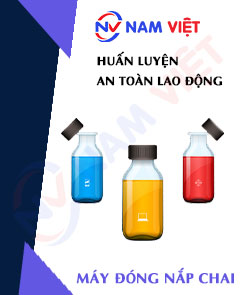

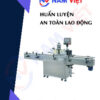




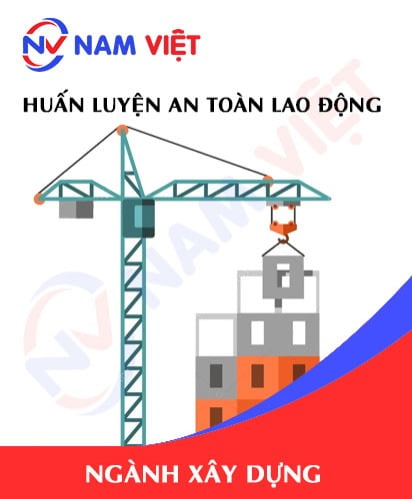

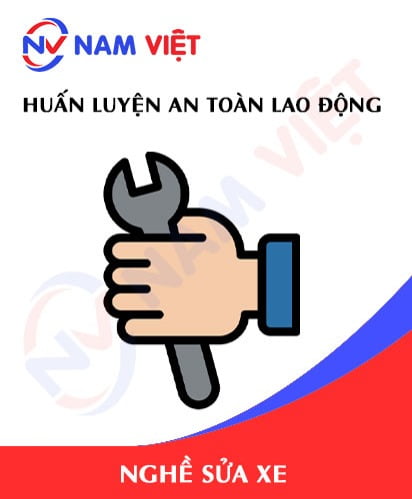


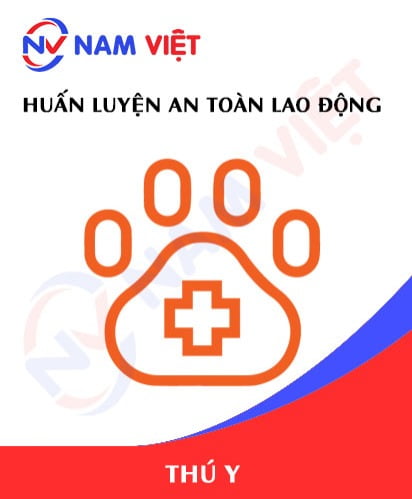

phanminhhang341
Hài lòng với cách tổ chức lớp học